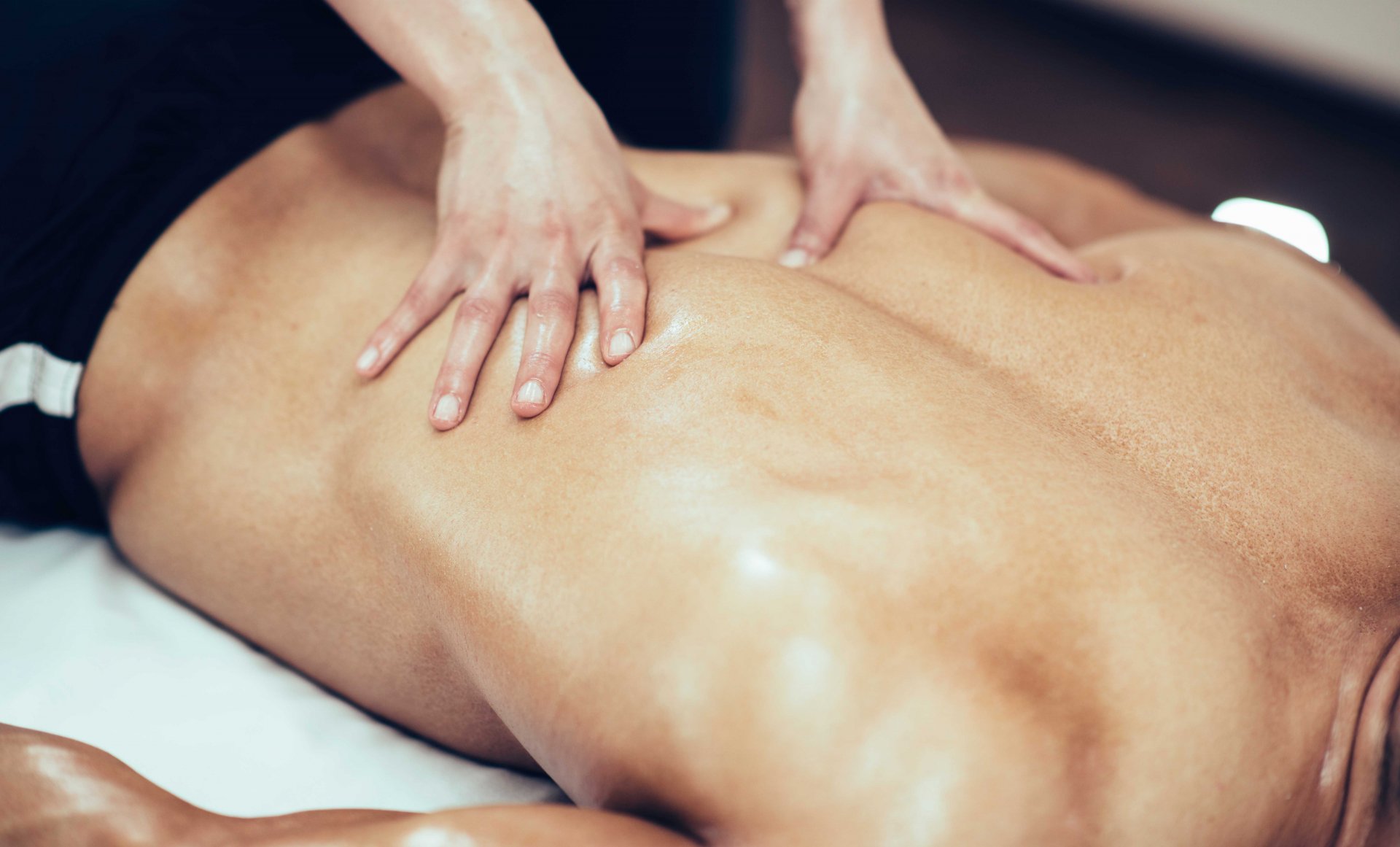
Introduction to the muscle chains
Montreal masso-kinesitherapy
As information multiplies, compares and clusters in all fields, several concepts are reinforced and sometimes become quite telling to break through in popularity. The health field is particularly prone to this phenomenon, with training and nutrition concepts such as keto dieting or crossfit.
In manual therapy, one of these buzzword concepts is muscle chains. Although each of these concepts has its own relevance, I would like to popularize the merits of muscle chains for you today.
I hope to help you understand the role they play in the design of your body in the eyes of your therapists.
What is a muscle chain?
Although there is still no official definition, the definition proposed by Françoise Mézières (the first recognized user of the term) is rather satisfactory: "a set of poly-articular muscles, of the same direction and whose insertions overlap one another like tiles on a roof" (1) .
The concept has continued to evolve since its first appearance, but the meaning remains essentially the same. In this definition, there are several elements.
First, the muscles that make up a muscle chain extend across several joints.
Secondly, the muscle fibers that make up the muscles are more or less an extension of those of other muscles in the same chain.
Third, and finally, the origins and insertions of the muscles are close enough to offer an extension of the mechanical work from one muscle to another. With these criteria, anyone could, during a dissection, identify different muscle chains.
Common work
Muscles that are links in the same line often perform common, or at least strongly related, movements. This is because their endings are often common to each other, and the orientation of their muscle fibers are in approximate continuity from one muscle to another. Let's take the most obvious example, the paravertebral muscles.
The paravertebral muscles are in fact a group of muscles (which include the various longissimus, semispinatus, ilio-costalis and multifidus muscles) that perform several movements including the extension of the intervertebral joints. Some of them move only one vertebral level at a time, a rather minimal movement individually, but when all these muscles work together, they allow a movement of great amplitude and precision.
It is the communication within this muscle chain that allows you to make your blind spot in the car. Moreover, if one part of the chain is not able to do its part of the work, the other links will often have to work harder to ensure that the movement is carried out anyway. So these muscles are linked for better or worse.
The exact match
The body is a very complex and sometimes imperfect machine. Two muscles belonging to the same muscle chain have endings that sometimes only partially overlap, which could reinforce the skepticism of some people about the concept of chains. On the other hand, there are also several examples of exact correspondence between the endings of certain links that serve as fairly strong evidence in favor of the concept. A good example of this is the splenius of the right head which begins at the mastoid process of the skull and ends at the spinous processes of the C7 to D3 vertebrae. These same C7-D3 landmarks are the origin of the left rhomboid fibers that extend the path to the medial border of the left scapula. Once again, the medial border of the left scapula is also the beginning of the anterior serratus major muscle that will extend the path to the first ten ribs. This chain (called the spiral chain 2 ), once observed, is difficult to attribute to simple chance and suggests a logical, even intelligent organization of the musculature.
The linking method
Beyond the nervous coordination of the movements of these muscles of the same chain, there is a structural link that reinforces the lines that these chains run. Each of the structures of our bodies are covered by a fascia, a connective tissue that supports, maintains and protects them. These fascias tend to develop a variable level of adhesion and connectivity with other surrounding fascias. In the case of muscle chains, dissections reveal that the chain muscles have particularly strong facial connections, which facilitate communication from one end to the other, the transmission of tension, and also sometimes pain. Although the principle of creating these connections is not yet well established in the scientific literature, there is clear evidence of its presence and effects, such as the myofascial pain syndrome 3 .
Relevance to manual therapy
Adding the conceptual lens of muscle chains to your therapist's vision allows him or her to see your body and your issues in a more holistic way, and to identify possible contributing factors to your discomforts that may not otherwise be evident.
Since our bodies function in much the same way from person to person, familiarity with certain recurring and important chains allows us to develop and refine clinical approaches that generate important results.
However, beyond the chains that are present in everyone, other chains can also develop in an unorthodox way in someone who repeatedly performs a particular task.
In this case, it is interesting to identify the development of the muscle fascia association in order to be able to relieve any tension that may accumulate and cause discomfort.
Conclusion
Muscle chains are just a buzzword with no basis in fact. The concept is based on structural evidence that is observable to the naked eye, sometimes with striking eloquence. The body has evolved to optimize the way our muscles work together, and our still imperfect understanding is slowly learning to integrate this concept into the therapeutic understanding of our clients' bodies.
Many questions remain unanswered about muscle chains, but we can be satisfied with their understanding and the clinical results they are providing for now.
-- Sources
1 Françoise Mézière, Originality of the Mézières Method. Maloine
2 Anatomy trains
3 ncbi.nlm.nih.gov/pmc/articles/PMC4285362
Read article
Anatomy of breathing muscles
DO YOU KNOW YOUR BREATHING MUSCLES?
Breathing is the most important vital function of the human body. Unfortunately, too little importance is given to it in our priorities when we think about the maintenance of our body. Although I do not advise it, it is often said that the human body can function for 3 weeks without food, 3 days without water and 3 minutes without oxygen before deterioration. So why don't we spend more time taking care of our respiratory health?
The role of systemic respiration is to take oxygen from the air and circulate it through the bloodstream. Oxygen is required for the majority of chemical reactions in your body that require energy. Less oxygen means less energy for your body to use.
I will review your respiratory anatomy and then give you some tips on how to maintain it. It is important to note that the intercostal muscles, although involved in any respiratory movement, will be ignored, as they are rarely the source of problems and are therefore very rarely the target of treatment.
Translated with www.DeepL.com/Translator (free version)
Read article
MUSCLE STRAIN:
RECOGNIZING IT, UNDERSTANDING IT AND TREATING IT
The warm weather and running season is fast approaching and many of you will be getting ready to run outside. Unfortunately, most athletes end up with a muscle strain sooner or later.
I propose to explore the physiology behind this common early season injury, demystify the underlying inflammatory process and give you some tools to prevent and manage a muscle strain.
First, it's important to understand what a muscle strain is. "Muscle strain is a traumatic elongation (with tearing) of a muscle, resulting in the breakdown of one or more myocytes (muscle contractile unit), fascia and sometimes the tendon." The word muscle strain is therefore a nickname for a partial muscle tear that is the result of an extreme contraction. Micro-tears are ubiquitous when you strain your muscles even the slightest bit, but as long as they don't exceed your body's ability to heal, you'll only feel tolerable soreness.
It is when the tears exceed this threshold that we speak of a muscle strain, only then will you be bothered by them.
The muscles most often affected by strains are the large muscles of the lower limbs: the quadriceps, hamstrings and gastrocnemius.
There are four scenarios that can cause a muscle strain:
Spontaneously, following a muscle contraction stronger than the muscle can withstand.
Following a sub-maximal contraction, but from a muscle that is not sufficiently warmed up (the muscle's capacity to contract is diminished in this case).
Following a sub-maximal contraction, but from a previously fatigued muscle (the muscle's capacity to contract is also reduced in this case).
Following an important shock on a muscle in maximum contraction.
As you can see, the first three cases are related, because they are the result of the same phenomenon, but which occurs in a muscle depending on its state (tired, not warmed up), which influences its contraction capacity.
If you recognize yourself in one of these four cases, here is an exhaustive list of symptoms of a muscle strain that can help you recognize one (note that the intensity of these symptoms varies according to the severity of the tear):
A sudden, violent, flash of pain;
Sometimes a tearing sound is perceived;
Rapid formation of edema (inflammation);
Immediate functional impotence: muscle contraction is painful;
Pain on palpation;
Pain on walking;
Appearance of a hollow or a groove at the level of the injured muscle belly;
Appearance of one or more hematomas in the following hours;
Pain that lasts several weeks.
Now that you understand how a muscle strain occurs and how to recognize it, let's turn our attention to the healing mechanism: inflammation. The human body is made up of several fluids that travel in networks of circulation and that allow them to be mobilized to the necessary places. In these fluids (blood and lymph) are several immune agents, such as white blood cells, which have the function of destroying foreign particles, repairing damaged tissues and restoring balance in the body.
So when a muscle strain occurs, excess fluid is called to the site of the injury. It can then become swollen, red, hot and painful. The problem is that often the inflammation gets out of control and the agents that are supposed to remove metabolic waste or provide nutrients for repair get stuck in the engorgement. This is exactly like a traffic jam. So imagine a big accident on the highway: traffic condenses around it and ambulances, police and tow trucks have difficulty getting to the accident site or even out of it.
Traffic must therefore be restored to help the healing process. The problem is often that the muscle strain limits the movement of the muscle and, knowing that muscle pumping is an important factor in the circulation of fluid in the lower limbs, it is understandable that the inflammatory process takes all the more time to do its work. This is why it is often recommended to put ice on the muscle: cold has a vasoconstrictive action (reducing the diameter of the blood vessels) which helps to recirculate the accumulated fluids. Elevating the limb also helps, as gravity will help the fluids leave the area.
Read article

